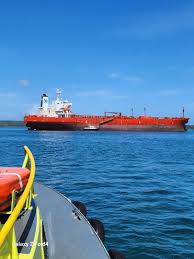Maximizing Efficiency: Balancing Onshore and Offshore Operations
Onshore and offshore operations play a critical role in maximizing efficiency in various industries. The balance between these two types of operations is essential for companies to optimize their resources and achieve the highest level of productivity. In this paper, we will explore the significance of balancing onshore and offshore operations, and the strategies for achieving maximum efficiency in this aspect of business. We will discuss the advantages and challenges of each type of operation, and provide insights into how companies can effectively navigate the complexities of onshore and offshore operations to drive success.
Maximizing Efficiency: Balancing Onshore and Offshore Operations involves finding the optimal balance between conducting operations onshore and offshore to maximize efficiency and cost-effectiveness. It requires careful consideration of various factors, including labor costs, productivity levels, skill sets, and infrastructure. Companies must weigh the benefits and drawbacks of each option and strategically allocate resources to achieve the best possible outcomes. Effective coordination and communication between onshore and offshore teams are crucial for achieving seamless operations and maximizing overall efficiency.
Understanding the Key Differences Between Onshore and Offshore Operations

In the oil and gas industry, onshore operations refer to activities conducted on land, while offshore operations take place at sea. Each type of operation comes with its own set of advantages and challenges. Onshore operations often benefit from easier access to resources and infrastructure, while offshore operations offer potential for higher productivity and less environmental impact. However, navigating regulatory frameworks, optimizing efficiency, and understanding the differences between the two are crucial for success in both onshore and offshore operations.
Onshore operations refer to activities and processes that take place within the country's borders, while offshore operations are conducted in a different country, usually in a lower-cost jurisdiction. Key differences between onshore and offshore operations include regulatory compliance, cost, access to talent, and risk management. Onshore operations are typically subject to the regulations and laws of the host country, which can lead to higher operating costs and stricter compliance requirements. In contrast, offshore operations may benefit from more lenient regulations and lower costs, but they also come with increased risk due to potential political instability and distance from the home country. Additionally, onshore operations may have easier access to a skilled labor force and infrastructure, while offshore operations may require more investment in building a remote workforce and establishing necessary facilities. Overall, understanding these differences is crucial for businesses considering expanding their operations internationally, as it can impact their bottom line and overall success.
The Pros and Cons of Onshore vs. Offshore Operations in Business

Onshore operations refer to the business activities that are conducted within the country where the company is located, while offshore operations are those conducted in a different country. Some of the advantages of onshore operations include better quality control as the company has greater oversight over its processes. Onshore operations also tend to have lower transportation and logistics costs, as well as easier communication and collaboration with local partners and suppliers. Additionally, onshore operations often lead to better customer service due to shared time zones and cultural understanding. On the other hand, offshore operations can offer cost savings due to lower labor and production costs in certain countries. Offshore operations may also provide access to new markets and customers, as well as the opportunity to take advantage of tax incentives and favorable regulations in the host country. Additionally, offshore operations can diversify a company's risk by spreading its operations across different regions. However, offshore operations also come with challenges such as language barriers, cultural differences, and potential legal and regulatory issues. Offshore operations may also lead to longer lead times and increased transportation costs, as well as difficulties in monitoring and maintaining quality control. In conclusion, the choice between onshore and offshore operations depends on various factors including cost, market access, regulatory considerations, and risk management. Both options have their own set of pros and cons, and companies must carefully evaluate their specific circumstances before making a decision.
Optimizing Efficiency: Strategies for Onshore and Offshore Operations
Optimizing Efficiency: Strategies for Onshore and Offshore Operations is a comprehensive guide that covers various methods and best practices for enhancing productivity in both onshore and offshore operations. It addresses key areas such as supply chain management, maintenance and reliability, workforce management, process optimization, and technology integration. The book emphasizes the importance of aligning organizational goals with operational strategies to achieve maximum efficiency. It also provides case studies and real-life examples to illustrate successful implementation of these strategies. Overall, this resource offers valuable insights for professionals involved in onshore and offshore operations looking to improve their performance and drive business success.
Navigating Regulatory Challenges in Onshore and Offshore Operations
Navigating Regulatory Challenges in Onshore and Offshore Operations involves understanding and complying with a complex web of laws, regulations, and industry standards. This includes complying with environmental regulations, safety and operational standards, tax laws, and international trade requirements, among others. Companies operating in the onshore and offshore sectors must establish robust compliance programs, regularly monitor regulatory developments, and engage with regulators and industry stakeholders to ensure continued adherence to legal and operational requirements. Given the dynamic nature of regulatory environments, staying abreast of changes and adapting business practices accordingly is crucial to successful navigation of regulatory challenges in onshore and offshore operations.
The Future of Onshore and Offshore Operations: Trends and Opportunities
The future of onshore and offshore operations is continually evolving with technological advancements, regulatory changes, and market dynamics. Key trends include the adoption of digital technologies for improved efficiency and productivity, increased focus on environmental sustainability and renewable energy sources, and the development of new oil and gas discoveries in unconventional and deepwater areas. Opportunities also exist for companies to streamline operations, reduce costs, and enhance safety measures through innovative solutions such as automation, remote monitoring, and predictive maintenance. Overall, the future of onshore and offshore operations presents a mix of challenges and opportunities for industry players to navigate and capitalize on.
تعليقات
إرسال تعليق